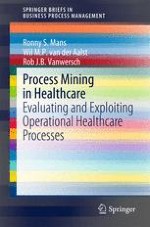What are the possibilities for process mining in hospitals? In this book the authors provide an answer to this question by presenting a healthcare reference model that outlines all the different classes of data that are potentially available for process mining in healthcare and the relationships between them. Subsequently, based on this reference model, they explain the application opportunities for process mining in this domain and discuss the various kinds of analyses that can be performed.
They focus on organizational healthcare processes rather than medical treatment processes. The combination of event data and process mining techniques allows them to analyze the operational processes within a hospital based on facts, thus providing a solid basis for managing and improving processes within hospitals. To this end, they also explicitly elaborate on data quality issues that are relevant for the data aspects of the healthcare reference model.
This book mainly targets advanced professionals involved in areas related to business process management, business intelligence, data mining, and business process redesign for healthcare systems as well as graduate students specializing in healthcare information systems and process analysis.
